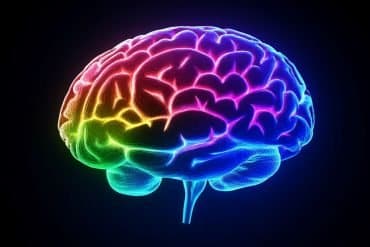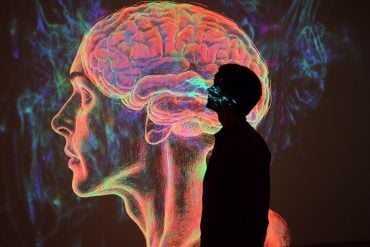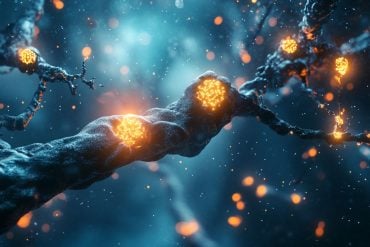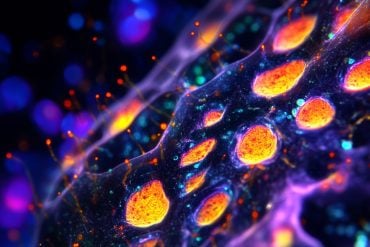Summary: Researchers say that late-morning exercise may be more effective in boosting metabolism and burning fat than late-evening exercise. The findings could prove valuable to those who are overweight and looking to lose fat by implementing an exercise program.
Source: Karolinska Institute
Physical activity at the right time of the day seems able to increase fat metabolism, at least in mice.
A new study from Karolinska Institutet in Sweden and the University of Copenhagen in Denmark shows that mice that did exercise in an early active phase, which corresponds to morning exercise in humans, increased their metabolism more than mice that did exercise at a time when they usually rest.
The results are published in the journal PNAS.
Physical activity at different times of the day can affect the body in different ways since the biological processes depend on the circadian rhythms of the cells.
To ascertain how the time of day at which exercise is done affects the burning of fat, researchers at Karolinska Institutet and the University of Copenhagen studied the adipose tissue of mice after a session of high-intensity exercise performed at two points of the daily cycle, an early active phase and early rest phase (corresponding to a late morning and late evening session, respectively, in humans).

The researchers studied various markers for fat metabolism and analyzed which genes were active in adipose tissue after exercise.
Independent of food intake
The researchers found that physical activity at an early active phase increased the expression of genes involved in the breakdown of adipose tissue, thermogenesis (heat production) and mitochondria in the adipose tissue, indicating a higher metabolic rate. These effects were observed only in mice that exercised in the early active phase and were independent of food intake.
“Our results suggest that late morning exercise could be more effective than late evening exercise in terms of boosting the metabolism and the burning of fat, and if this is the case, they could prove of value to people who are overweight,” says Professor Juleen R. Zierath from the Department of Molecular Medicine and Surgery and the Department of Physiology and Pharmacology, Karolinska Institutet.
Improve the health benefits of exercise
Mice and humans share many basic physiological functions, and mice are a well-established model for human physiology and metabolism. However, there are also important differences, such as the fact that mice are nocturnal.
“The right timing seems to be important to the body’s energy balance and to improving the health benefits of exercise, but more studies are needed to draw any reliable conclusions about the relevance of our findings to humans,” says Professor Zierath.
About this exercise and metabolism research news
Author: Press Office
Source: Karolinska Institute
Contact: Press Office – Karolinska Institute
Image: The image is in the public domain
Original Research: Open access.
“Time of day determines postexercise metabolism in mouse adipose tissue” by Pendergrast, Logan A. et al. PNAS
Abstract
Time of day determines postexercise metabolism in mouse adipose tissue
The circadian clock is a cell-autonomous transcription–translation feedback mechanism that anticipates and adapts physiology and behavior to different phases of the day. A variety of factors including hormones, temperature, food-intake, and exercise can act on tissue-specific peripheral clocks to alter the expression of genes that influence metabolism, all in a time-of-day dependent manner.
The aim of this study was to elucidate the effects of exercise timing on adipose tissue metabolism. We performed RNA sequencing on inguinal adipose tissue of mice immediately following maximal exercise or sham treatment at the early rest or early active phase.
Only during the early active phase did exercise elicit an immediate increase in serum nonesterified fatty acids. Furthermore, early active phase exercise increased expression of markers of thermogenesis and mitochondrial proliferation in inguinal adipose tissue.
In vitro, synchronized 3T3-L1 adipocytes showed a timing-dependent difference in Adrb2 expression, as well as a greater lipolytic activity. Thus, the response of adipose tissue to exercise is time-of-day sensitive and may be partly driven by the circadian clock.
To determine the influence of feeding state on the time-of-day response to exercise, we replicated the experiment in 10-h-fasted early rest phase mice to mimic the early active phase metabolic status.
A 10-h fast led to a similar lipolytic response as observed after active phase exercise but did not replicate the transcriptomic response, suggesting that the observed changes in gene expression are not driven by feeding status.
In conclusion, acute exercise elicits timing-specific effects on adipose tissue to maintain metabolic homeostasis.






